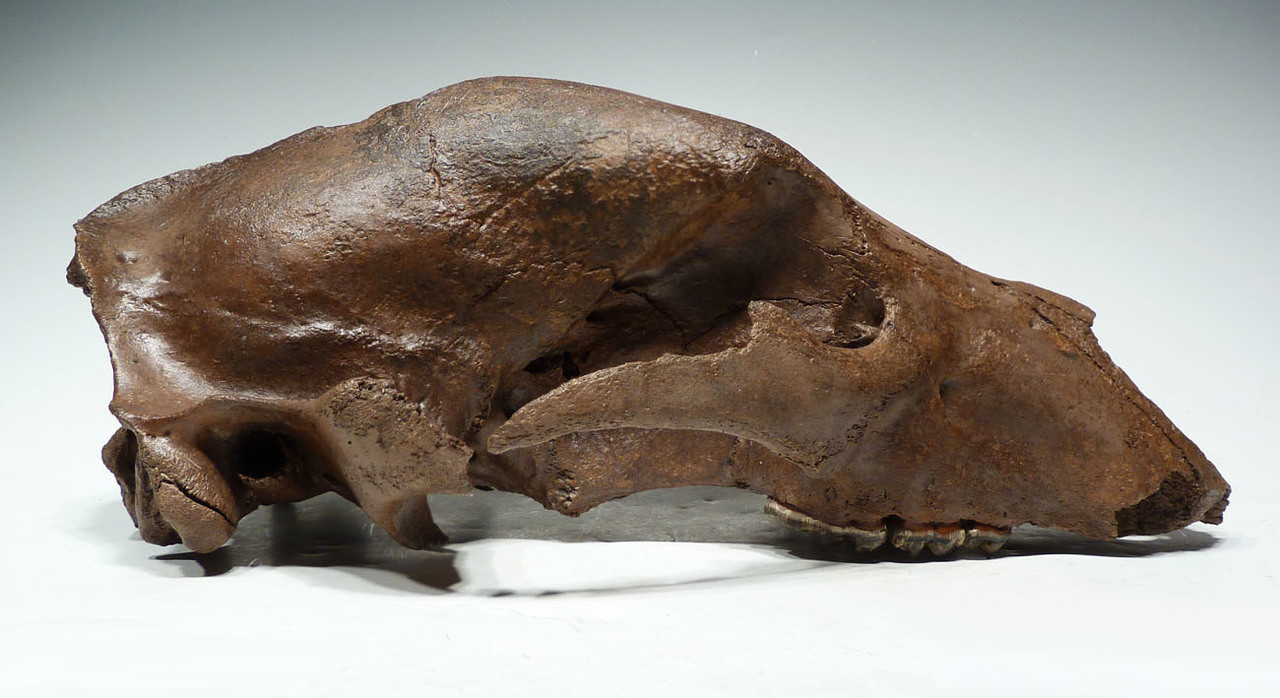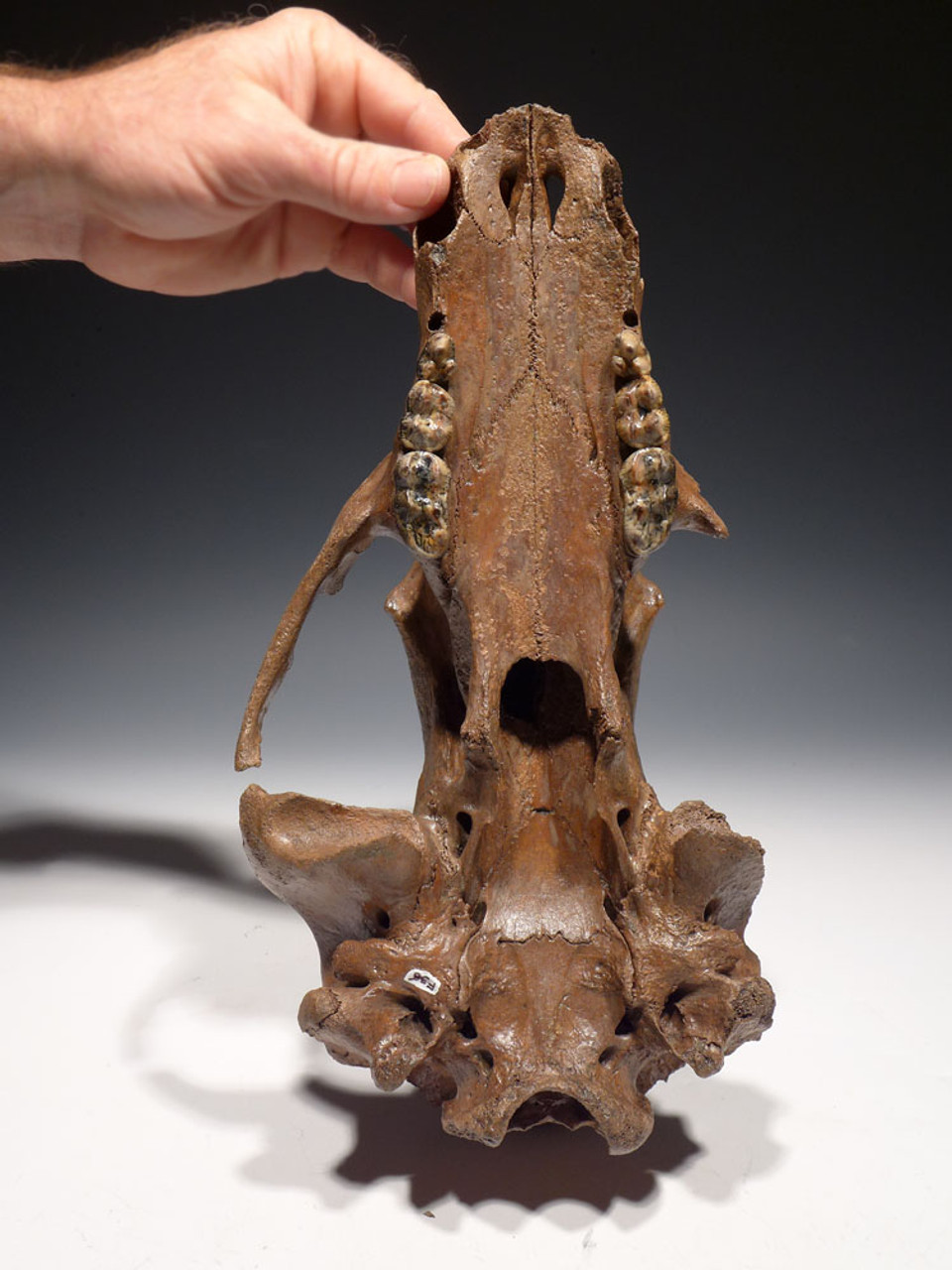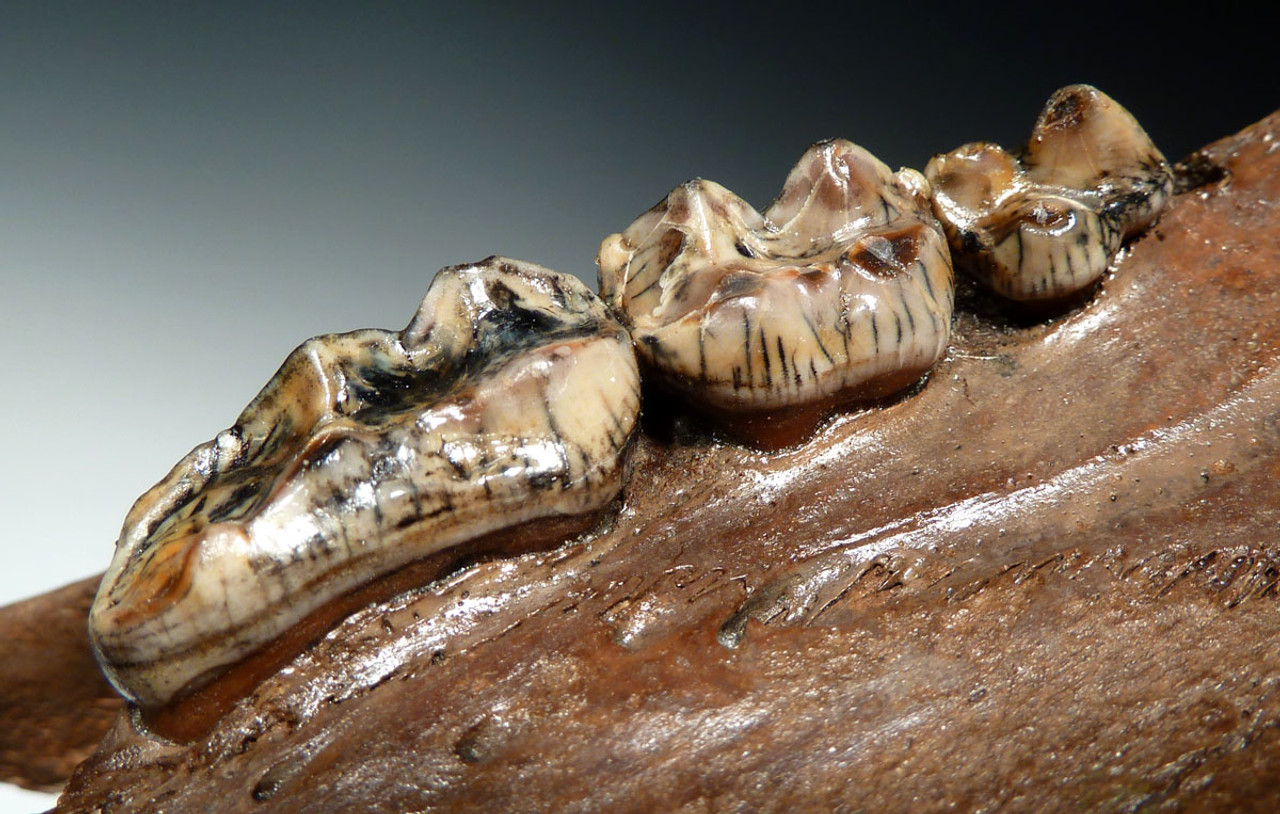Product Description
Alongside the true Cave Bear from Europe, Ursus spelaeus, lived the European Brown Bear, Ursus arctos. Ursus arctos was one of the predators feared and avoided by prehistoric humans like Neanderthals and Cro-Magnon peoples during the final Ice Age in Europe. Ursus arctos moved from Asia into Europe around 250,000 years ago and unlike the Cave Bear, survived the end of the Ice Age but in Europe, the Brown Bear is only estimated to be around 100 animals and is near extinction. Fossils from Ursus arctos are very rare and this is THE ONLY FOSSIL SKULL WE HAVE EVER SEEN, EVEN AMONG MAJOR EUROPEAN MUSEUMS!
This skull was found in the same gravel quarry and at the same depth, over 20 meters down, with fossil Woolly Mammoth, Woolly Rhinoceros and Megaloceros remains. The color of the bone and teeth of those Ice Age animals was identical to the bone and teeth color of this skull. For a comprehensive fossil Ice Age exhibit, and the ultimate addition to an Ice Age display, this is an extremely important and recommended specimen. It is not hard to secure fossils of the Cave Bear but to add the Brown Bear to your collection, is an extremely rare chance discovery, when the fossils are found.
This fossil skull of Ursus arctos is virtually complete. It has NO REPAIR, RESTORATION OR ENHANCEMENT and other than being stabilized with B-72, it is as it was found. The dentition is original to the skull and was found as you see it in the photos. There is a hole in the posterior region of the cranium but it was found this way. It is interesting as one must wonder was it from ordinary damage over prehistory or, was it made by prehistoric human hunters who removed the brain. ??? In many ancient cultures, eating the brain of an animal killed in a hunt, was a ritual believed to mean you would adopt the power of the killed animal. It's simply conjecture but the hole is in the exact spot where it would be easiest to remove the brain to eat, either for ritual or simply for nourishment.
For a museum or highly advanced private collection hoping to exhibit the apex predator megafauna of Ice Age Europe, this specimen would be a "crown jewel" part of the collection and a great candidate for scientific publication. Ursus arctos coexisted and competed for shelter in Winter, with prehistoric humans. They lived alongside each other at one point in history and were hunted and most likely revered by both Neanderthal and Cro-Magnon humans.
THE EUROPEAN PREHISTORIC BROWN BEAR (Ursus arctos) WAS ONE OF FEW DEADLY ANIMALS THAT PREHISTORIC HUMANS FEARED, ALONG WITH CAVE HYENA, CAVE LION AND CAVE BEAR, YET FOSSIL SKULLS OF THIS BEAST ARE VIRTUALLY IMPOSSIBLE TO FIND IN EVEN THE FINEST OF MUSEUMS.
 US DOLLAR
US DOLLAR
 EURO
EURO
 AUSTRALIAN DOLLAR
AUSTRALIAN DOLLAR
 CANADIAN DOLLAR
CANADIAN DOLLAR
 POUND STERLING
POUND STERLING


































